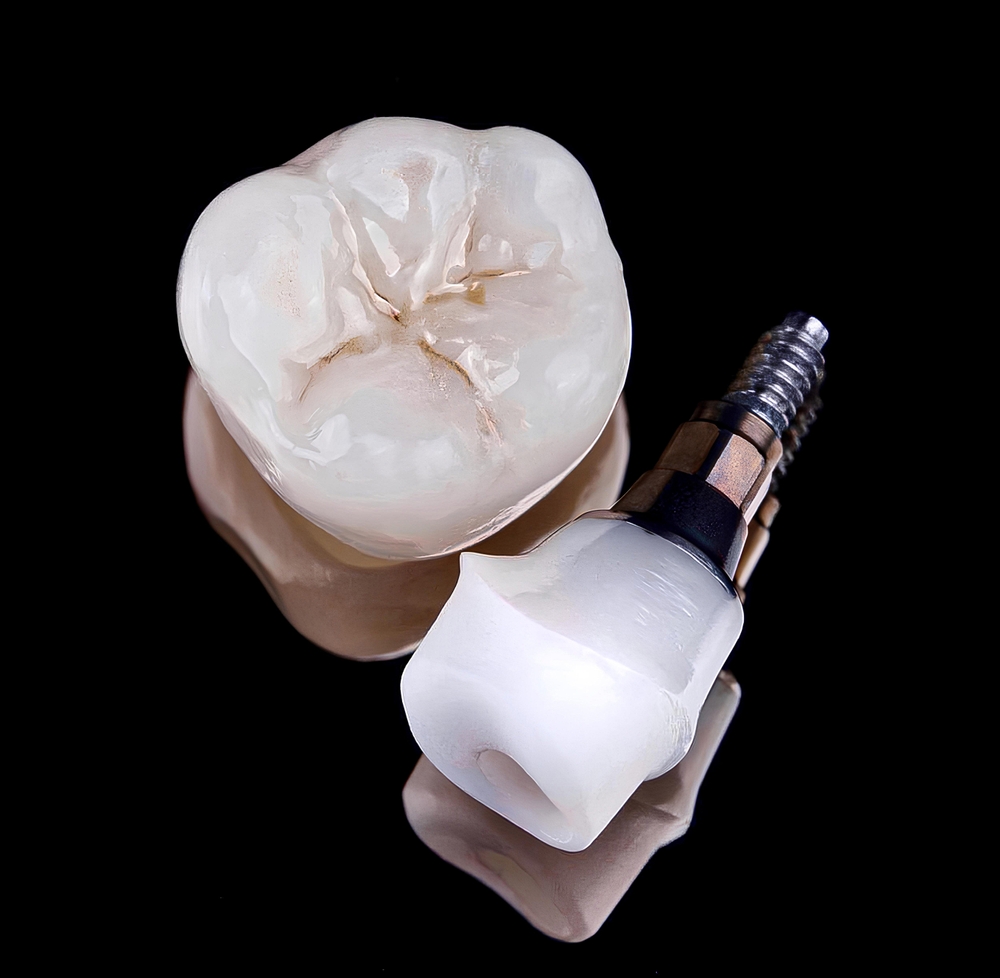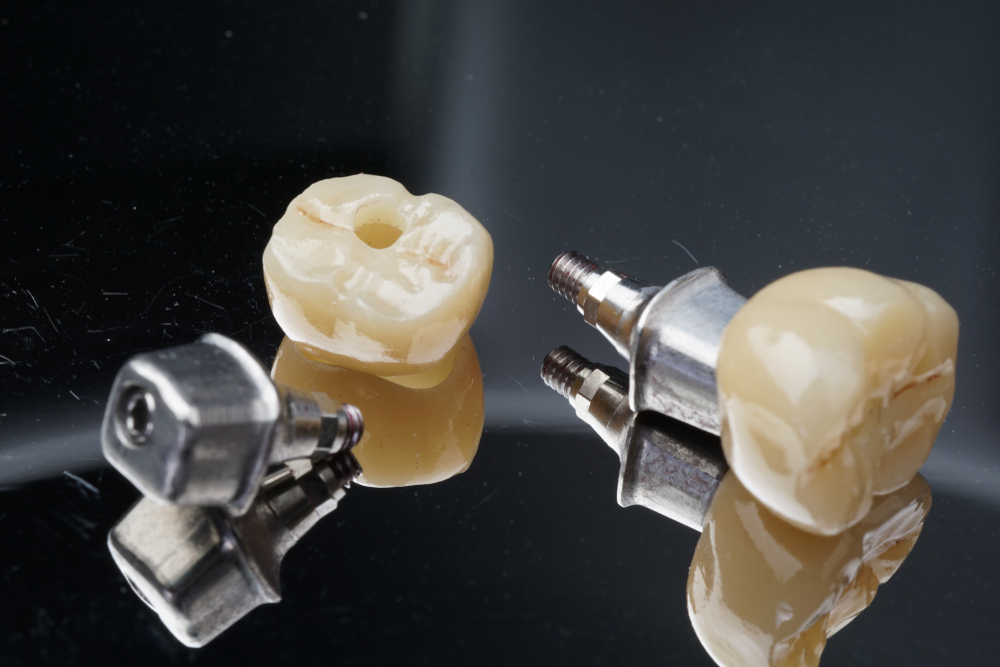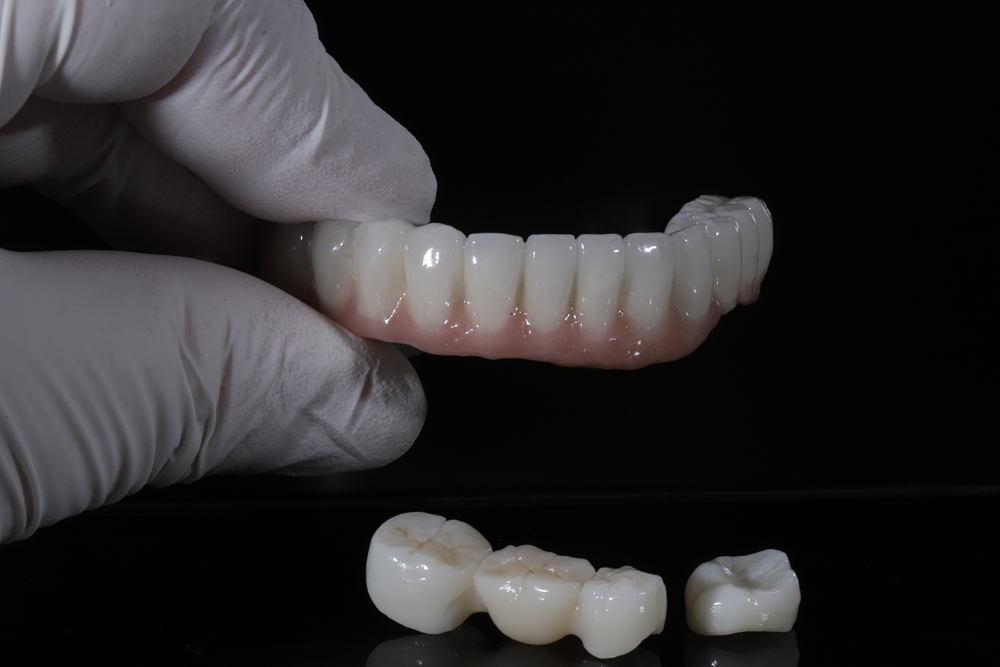In recent years, the field of dentistry has witnessed remarkable advancements, particularly in restorative materials and techniques. One of the most notable breakthroughs is the emergence of all-ceramic crown and bridge restorations. These innovative solutions have revolutionized dental care, providing patients with durable, aesthetically pleasing, and biocompatible dental restorations. In this blog, we will explore the key benefits and technological advancements that make all-ceramic crown and bridge restorations the gold standard in modern dentistry.
The All-Ceramic Difference
Traditionally, dental crowns and bridges were commonly fabricated using metal-based materials such as gold or metal alloys. While these materials were functional and strong, they often lacked the natural appearance and translucency of real teeth. With all-ceramic restorations, dentists can now achieve a perfect balance between aesthetics and functionality, enhancing both the patient’s smile and overall oral health.
Advantages of All-Ceramic Crown and Bridge Restorations
- Aesthetics: All-ceramic restorations closely mimic the natural color, shape, and translucency of real teeth. This means that patients can confidently smile without worrying about unsightly metal lines or dark edges commonly associated with traditional crowns.
- Biocompatibility: Ceramic materials are biocompatible and hypoallergenic, reducing the risk of adverse reactions and ensuring a more comfortable fit for patients.
- Durability: Modern all-ceramic materials are exceptionally strong and resilient, with sufficient strength to withstand the forces of regular biting and chewing.
- Conservation of Tooth Structure: All-ceramic restorations require less removal of healthy tooth structure compared to metal-based crowns, preserving more of the natural tooth.
- Reduced Sensitivity: Unlike metal crowns, all-ceramic restorations are less conductive to temperature changes, reducing the chances of sensitivity to hot or cold foods and beverages.
- Compatibility with Digital Dentistry: All-ceramic crown and bridge restorations can easily integrate with digital dentistry workflows, allowing for precise and efficient design and manufacturing processes.
Technological Advances in All-Ceramic Restorations
The progress in dental materials and technology has played a crucial role in advancing all-ceramic crown and bridge restorations. Some of the noteworthy advancements include:
Zirconia-Based Restorations:
Zirconia has significantly advanced all-ceramic crown and bridge restorations by addressing several limitations of previous materials and offering a range of benefits that have made it a preferred choice for modern dentistry. Here are some key ways in which zirconia has revolutionized all-ceramic restorations:

- Exceptional Strength and Durability: Zirconia is renowned for its outstanding mechanical properties, including high flexural strength and fracture resistance. These properties make zirconia-based restorations incredibly durable and capable of withstanding the forces of regular biting and chewing, ensuring longevity and reducing the risk of chipping or fracturing.
- Biocompatibility and Allergy Resistance: Zirconia is a biocompatible material, meaning it is well-tolerated by the human body. It does not trigger adverse reactions or allergies, making it suitable for a broader range of patients, even those with metal sensitivities.
- Aesthetics: Initially, zirconia restorations were primarily chosen for their strength, but advancements in manufacturing and shade-matching technologies have greatly improved their aesthetics. Dental labs can now create zirconia restorations that closely mimic the appearance of natural teeth, with variations in translucency and color that seamlessly blend with the patient’s smile.
- Versatility in Applications: Zirconia’s versatility allows it to be used for various dental restorations, including single crowns, multi-unit bridges, inlays, onlays, and implant-supported restorations. Its adaptability to different scenarios has expanded its utility in restorative dentistry.
- Conservation of Tooth Structure: Zirconia-based restorations require less removal of healthy tooth structure compared to traditional metal-ceramic restorations. Dentists can achieve conservative preparations while still ensuring the necessary strength and longevity of the restoration.
- CAD/CAM Technology Integration: Zirconia has integrated seamlessly with computer-aided design (CAD) and computer-aided manufacturing (CAM) technologies. This enables precise digital scanning and design, resulting in restorations with accurate fit and minimal adjustments, reducing chairside time for patients.
- Monolithic Zirconia Restorations: One of the most significant advancements is the development of monolithic zirconia restorations. These restorations are milled from a single block of zirconia, eliminating the need for a porcelain overlay. Monolithic zirconia restorations offer exceptional strength and improved aesthetics, making them an attractive option for posterior teeth and areas with high chewing forces.
- Rapid Manufacturing Techniques: Advancements in milling and 3D printing technologies have made it possible to produce zirconia restorations more efficiently and quickly, benefiting both patients and dental professionals.
- Long-Term Stability: Zirconia has demonstrated excellent long-term stability, with low wear rates against opposing natural teeth or restorations. This makes it an ideal material for maintaining proper occlusion and preserving the integrity of the entire dental arch.
In summary, zirconia has transformed the landscape of all-ceramic crown and bridge restorations by offering superior strength, biocompatibility, aesthetics, and versatility. Its integration with modern CAD/CAM technologies has streamlined the manufacturing process, allowing for precise and efficient fabrication of restorations. As zirconia continues to evolve, it is likely to play an even more prominent role in providing patients with durable and aesthetically pleasing dental restorations for years to come.
Layered and Monolithic Restorations:
Layered and monolithic restorations have each brought significant advancements to all-ceramic crown and bridge restorations, offering unique benefits that cater to different patient needs and clinical scenarios. Let’s explore how each approach has contributed to the evolution of all-ceramic restorations:
Layered Restorations:
- Aesthetic Excellence: Layered restorations are designed using a combination of different ceramic materials, allowing dental technicians to replicate the natural appearance of teeth. By layering varying shades of ceramics, they can achieve lifelike translucency, color, and characterization, resulting in restorations that are virtually indistinguishable from natural teeth.
- Customizability: The layered technique provides dental professionals with a high level of customization. Dentists can work closely with dental technicians to fine-tune the aesthetics and achieve personalized results that match the unique characteristics of each patient’s smile.
- Natural Tooth Replication: The layering process allows for the recreation of the complex anatomy found in natural teeth, including the subtle color variations and opalescence that contribute to a realistic appearance.
Monolithic Restorations:
- Strength and Durability: Monolithic restorations are milled from a single block of ceramic, eliminating potential weak points or bonding interfaces. This results in exceptional strength and durability, making monolithic restorations particularly well-suited for posterior teeth and areas with high chewing forces.
- Reduced Fracture Risk: Due to their homogenous structure, monolithic restorations have a lower risk of chipping or delamination, enhancing their longevity and minimizing the need for repairs or replacements.
- Time and Cost Efficiency: Monolithic restorations require less labor and materials compared to layered restorations, leading to reduced production time and cost-effectiveness for both the dental lab and the patient.
Integration of Both Approaches:

- Versatility: By offering both layered and monolithic options, dental professionals can tailor their choice of restoration based on the specific needs of each patient. This flexibility allows for versatile treatment planning and ensures that the best-suited restoration is selected for each clinical case.
- Digital Dentistry: Both layered and monolithic restorations can integrate seamlessly with digital dentistry workflows, such as CAD/CAM technology and 3D printing, ensuring accurate and precise fabrication for optimal fit and aesthetics.
In conclusion, the advancements of layered and monolithic restorations have expanded the possibilities for all-ceramic crown and bridge restorations. Layered restorations excel in replicating natural tooth aesthetics with a high level of customization, while monolithic restorations provide superior strength and reduced fracture risk. The integration of both approaches ensures dental professionals can meet the diverse needs of their patients while delivering durable, aesthetically pleasing, and functional restorations that contribute to the continued advancement of modern dentistry.
In Conclusion
The advancements in all-ceramic crown and bridge restorations have transformed modern dentistry, elevating patient care to new heights. With superior aesthetics, biocompatibility, and strength, these restorations enable dentists to provide patients with long-lasting, natural-looking solutions that preserve tooth structure and enhance overall oral health. As technology continues to evolve, we can expect further refinements and innovations in all-ceramic materials, solidifying their position as the preferred choice for dental restorations. Whether it’s a single crown or a multi-unit bridge, all-ceramic solutions are leading the way towards a brighter, healthier smile for countless patients worldwide.




